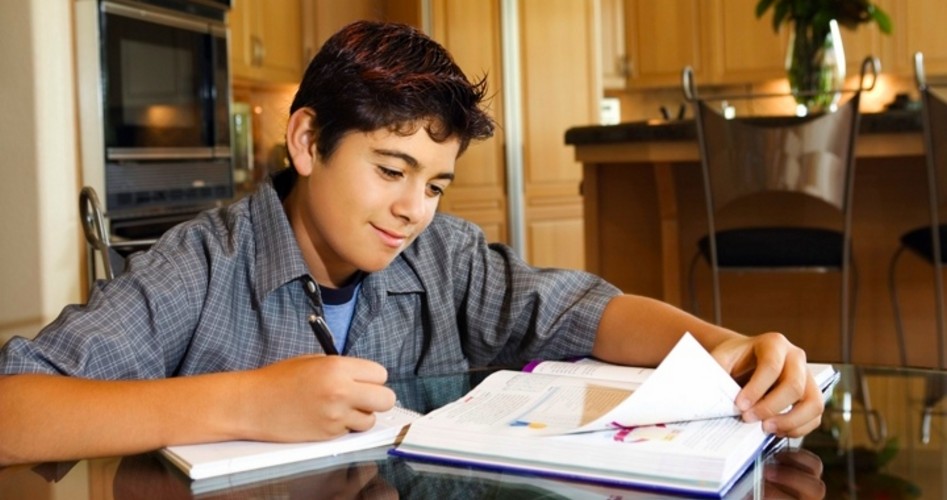Inside Track
Government Plan to Stop School Shootings: Monitor Homeschoolers
A government advisory commission assembled in the wake of the tragic Sandy Hook shooting has issued a proposal for preventing similar events that is raising eyebrows:
Monitor certain homeschoolers.
The Sandy Hook Advisory Commission (SHAC), consisting of 16 educators, local and state officials, and “behavioral experts,” was created 18 months ago by Governor Dannel Malloy after 20-year-old Adam Lanza committed the Connecticut mass shooting that transfixed the nation in December 2012. Lanza, “described as being ‘dark and disturbed’ before his death ... coldly murdered his own mother in their expensive home near Newtown, Connecticut. Then he took her legally registered guns to the nearby Sandy Hook Elementary School and shot and killed 20 children and six adults. Then he took a handgun and shot himself,” writes WND.com, describing the chain of events. The commission is targeting homeschooling apparently because Lanza’s mother removed him from the government school system in 10th grade and taught him at home for one and a half years.
The SHAC’s “chief recommendation” — which is for “tighter scrutiny of homeschoolers” — would only apply to home-educated students labeled with “emotional, social, or behavioral problems.” But observers worry this will be used as a pretext for gratuitous state intrusion into homeschooling families, as those with “problem” children “would have to file progress reports prepared by [government] special education program teams,” reports CTPost.com. Of special concern is the matter of who will determine what constitutes “emotional, social, or behavioral problems.”
This is especially relevant since anti-homeschooling forces have spread the notion that the practice stunts emotional, social, and behavioral development. For example, as Michael F. Haverluck reported at CBN News in 2007, “92 percent of [school] superintendents believe that home learners are emotionally unstable, deprived of proper social development and too judgmental of the world around them, according to a California study by researcher Dr. Brian Ray.”
The above statistic relates to another reason many are concerned about the proposal: Government educators have a vested interest in eliminating homeschooling. Every child taught at home means one less student who can be indoctrinated by schools — and means less funding for them.
Observers also point out that not only is placing an onus on homeschoolers based on one anecdote unfair, but Lanza attended government school for the first 10 years of his life; moreover, there are more anecdotes indicating that SHAC’s proposed cure is worse than (or may actually be) the disease. As Kyle Olson writes at Education Action Group News:
[I]f the act of homeschooling and the perceived lack of governmental oversight is to blame, how does Sandy Hook Advisory Panel explain away these public school students:
• On March 21, 2005, Red Lake Senior High School student Jeffrey Weise killed five students, one teacher, one security guard, and then committed suicide.
• On April 20, 1999, Columbine High School students Eric Harris and Dylan Klebold killed 12 students and one teacher, and wounded 21 others before committing suicide.
• On March 5, 2001, student Charles Andrew Williams killed two students and wounding 13 others at Santana High School in California.
• On February 27, 2012, TJ Lane walked into the Chardon High School cafeteria and fired into a group of students sitting at a lunch table. Three students died in the attack. His “emotional disability” was such that he wore a t-shirt with “Killer” scrawled on it to his sentencing.
The examples go on and they all point back to a failed government bureaucracy that apparently didn’t adequately address the “behavioral and emotional disabilities” of the students in its care.
More significantly, studies and statistics tell the same tale. As CBN’s Haverluck also reported:
Dr. Thomas Smedley ... conducted a study in which he administered the Vineyard Adaptive Behavior Scales test to identify mature and well-adapted behaviors in children. Home learners ranked in the 84th percentile, compared to publicly schooled students, who were drastically lower in the 23rd.
... Research presented at the National Christian Home Educators Leadership Conference divulged that homeschool graduates far exceeded their public and private school counterparts in college by ranking the highest in 42 of 63 indicators of collegiate success. They were also ranked as being superior in four out of five achievement categories, including socialization, as they were assessed as being the most charismatic and influential.
... When the Direct Observation Form of the Child Behavior Checklist was administered by education researcher Dr. Larry Shyers to identify 97 problematic behaviors in two groups of children, traditionally schooled students exuded eight times as many antisocial traits than [sic] their homeschooled counterparts.
This will come as no surprise to homeschooling families, whose children figure prominently in national spelling and geography bees and other academic competitions. Labeled abnormal because it’s unfashionable, homeschooling is actually the historical norm, which always involved educating and socializing children at home and provides the balance of intense exposure to not just peers (siblings), but also adults such as parents, grandparents, and perhaps extended family. This provides more, and more frequent, modeling of mature adult behavior, and virtues are caught more than they’re taught. What is in reality abnormal is the government-school environment, in which children spend much of the day, five days a week, around 30 immature age-mates. In such a setting, a gang-culture-like milieu generally develops, with students influenced more by bad-apple bad boys than the boy wonders; just consider how the pursuit of academic excellence in the black community can be stigmatized as “acting white” or how, anywhere, a well-behaved, diligent student may be mocked as a “goody-goody.”
And the proof is in the pudding, say critics. As Haverluck wrote, “The mass socialization conducted within schools has brought about a proliferation of delinquent behavior within this nation's youth, reports education researcher, Dr. Michael Slavinski. He notes that student bodies are increasingly riddled with violence, drugs, promiscuity, emotional disorders, crime, contempt for authority, desperate behavior, illiteracy and peer dependency — just to name a few.”
Given the clash of the homeschooling and government-schooling world views, each of which considers the other abnormal, there’s good reason to fear that homeschooler status alone may often be enough to get one labeled “disordered.” After all, the two views disagree profoundly on what constitutes proper “socialization.” While homeschoolers are often believing Christians who seek to instill godly virtues in their children, “Education researcher Dr. Michael Mitchell found that being popular, aggressively competitive, materialistically driven and self-confident are traits promoted in conventional schools,” wrote Haverluck.
In particular, while “[h]ome educators examined by Mitchell strive to dismantle any selfish ambitions and self-aggrandizement seen in their children, as opposed to cultivating them,” government schools stress “self-esteem.” As to this, the self-esteem movement began decades ago with the notion that girls were faltering in school (not true at the time, actually) and that this was due to their having lower self-esteem than boys do. Overlooked, however, was that the highest scores on self-esteem tests and the lowest academic scores were both registered by the same group: black males. Explanation?
“Self-esteem” has simply become a euphemism for pride.
This is why a government-school student may be told he’s “the most important person in the world” or be instructed to expound upon his own greatness. But, critics might say, academia today is producing anything but greatness — except in ego. And if “pride goeth before a fall,” is it any surprise American schooling is falling fast?



